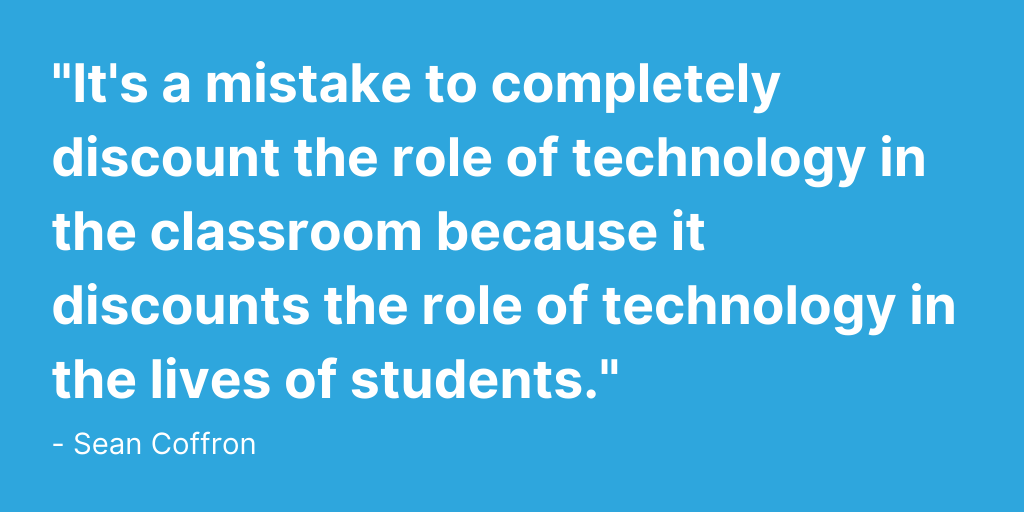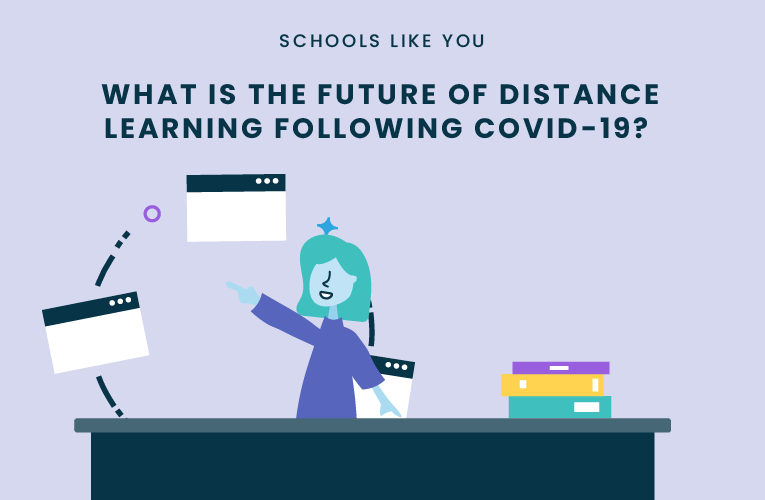Prior to COVID-19, Distance Learning (otherwise referred to as Remote Learning or e-Learning) was not a top priority for K-12 schools and districts. While some schools had e-Learning days in place or distance learning plans in the case of snow days, most districts were not prepared to go fully remote during this time.
As the current semester nears an end, K-12 educators are not only thinking about how to facilitate distance learning now, but what the future of distance learning looks like at their school or district. Inevitably there future distance learning plans will be implemented moving forward to be proactive when planning for unexpected events.
So what does the future of distance learning look like for K-12 schools and districts following COVID-19?
We’ve been having lots of conversations with K-12 educators to learn what distance learning looks like now, but in a recent conversation with Sean Coffron, Instructional Technology Training Specialist at Manassas City Public Schools, we explored what the future of distance learning might look like following this quarantine.
Where are we with distance learning?
It’s been a little over a month for most schools that are facilitating instruction through distance learning. Sean Coffron explained that we’ve now reached a point where the nuts and bolts of distance learning have been figured out. Schools know which technology tools are critical to making distance learning possible, and are focused now on enhancing instruction and preparing for the future of distance learning.
In conversations that we’ve had throughout Dyknow’s Remote Learning Week, the overwhelming sentiment is that distance learning is an opportunity to maximize technology tools that schools already use. Tech Coaches consistently say that this is not the time to introduce new tools or overwhelm teachers with a larger amount of technology. Moving forward to the future of distance learning, it will be critical to understand which tools are necessary to make distance learning possible, which tools enhance distance learning, and if there are technology tools that are really only useful in the traditional classroom.
However technology tools are implemented following distance learning, one thing is for sure. More teachers are using devices to teach than ever before, and technology is not going to leave K-12 classrooms anytime soon.
We are educating a digital generation
Sean’s opinion on the future of distance learning is very optimistic. He excited that technology has been a critical part of making distance learning possible because technology’s role in the classroom may have been discounted by some educators prior to COVID-19. He explained, “It’s a mistake to completely discount the role of technology in the classroom because it discounts the role of technology in the lives of students.”
Technology is a huge part of the generation that we are educating. Sean explained that “Gen Z is a digital generation. They have a digital presence, and some students have a digital presence that is more meaningful to them than their physical presence.” The way that students interact and exist in the world is completely different than it was even just 5-10 years ago, and integrating these changes into the classroom is important for their success.
Distance learning has allowed teachers to have more exposure to using technology in the classroom, opening up many doors of possibility for the future of traditional learning, as well as the future of distance learning.

Technology’s role in the future of distance learning
So, if technology is integral to conducting instruction in a distance learning setting and technology is important to effectively educate the current generation, what does the future of distance learning look like? Sean Coffron had some great insight.
He believes that “as these students get older and go to high school and college, it’s only going to grow the need for distance learning – whether it is in a college setting, workforce, training, or something more dynamic.” Because of this, it’s important to make sure that the future of distance learning is not just a worst-case-scenario but to understand the benefits that both teachers and students have gained from the current distance learning setting, and find ways for that to translate into the “traditional” classroom and beyond.
Sean shared that he is excited for the future of distance learning. He anticipates that distance learning will no longer be a wonderful opportunity for students and teachers. He believes that it will be a new way that we do business and conduct learning. “Distance learning will become part of the package and market development won’t be on how to do remote learning, but how to do it effectively.” With these anticipated chances, Sean also anticipates that an additional set of standards for remote learning will be developed and mirror the standards that we have now.
Listen to our full conversation with Sean Coffron
On this episode of Tackling Tech Podcast, powered by Dyknow, Brett McGrath talks with Sean Coffron, the Instructional Technology Training Specialist at Manassas City Schools. Sean shares how his district is continuing to educate students online, some of his favorite online platforms, and his hopes for the future of digital classrooms. Sean advises on what it means to be a studious digital citizen.
Start teaching confidently with Dyknow for free!
Latest blog articles

Dyknow 2021 Year In Review
In addition to web browser updates and bug fixes, Dyknow released several major product updates, new features and enhancements. Check out Dyknow’s 2021 Year in Review!

The Classroom Management Tool that’s Rated #1 in Satisfaction on G2
K-12 Administrators across the world trust G2 as the #1 platform to find, research, and choose EdTech tools that solve the most pressing problems their teachers are experiencing. In G2's Fall 2021 Reports, Dyknow was once again rated #1 in overall Satisfaction out of...

Bringing Diversity and EdTech to the English Classroom
On this episode of Tackling Tech, Tierra Leustig interviews Scott Bayer about being an anti-racist teacher, diversifying reading lists, creating inclusive learning environments, and leveraging ed-tech in non-technical ELA classrooms. Scott Bayer is a High School...

